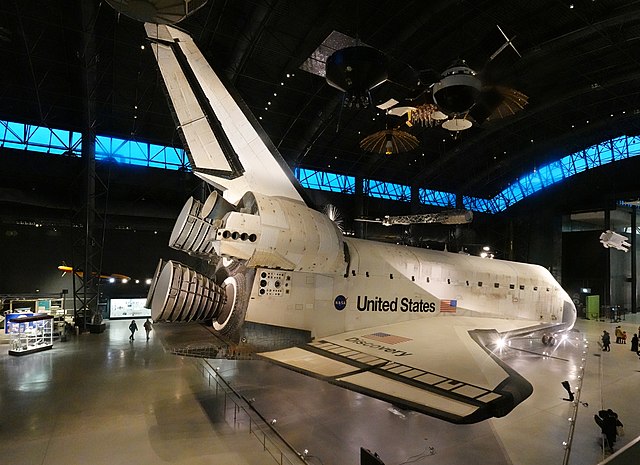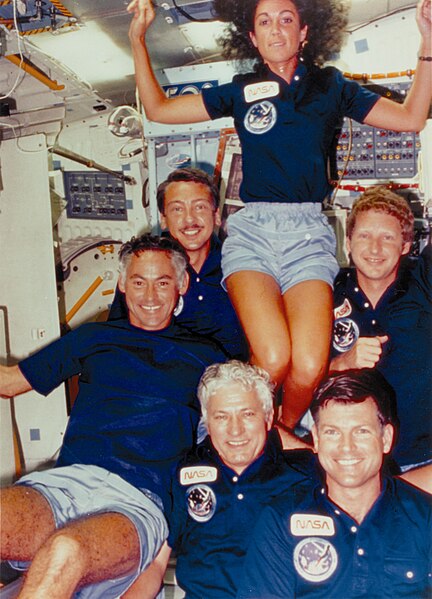STS-42 was a NASA Space Shuttle Discovery mission with the Spacelab module. Liftoff was originally scheduled for 8:45 EST on January 22, 1992, but the launch was delayed due to weather constraints. Discovery successfully lifted off an hour later at 9:52:33 EST. The main goal of the mission was to study the effects of microgravity on a variety of organisms. The shuttle landed at 8:07:17 PST on January 30, 1992, on Runway 22, Edwards Air Force Base, California. STS-42 was the first of two flights in 1992 of Discovery, the second of which occurred during STS-53, which launched on December 2, 1992. The mission was also the last mission of the Space Shuttle Discovery to have a seven-member crew until STS-82, which was launched on February 11, 1997.
Spacelab Module LM2 in Discovery's payload bay, serving as the International Microgravity Laboratory (IML).
Stephen S. Oswald, Roberta Bondar, Norman Thagard, Ronald J. Grabe, David C. Hilmers, Ulf Merbold, William F. ReaddySpace Shuttle program← STS-44 (44)STS-45 (46) →
Discovery lifts off at the start of STS-42.
Space Shuttle Discovery is a retired American spacecraft. The spaceplane was one of the orbiters from NASA's Space Shuttle program and the third of five fully operational orbiters to be built. Its first mission, STS-41-D, flew from August 30 to September 5, 1984. Over 27 years of service it launched and landed 39 times, aggregating more spaceflights than any other spacecraft to date. The Space Shuttle launch vehicle had three main components: the Space Shuttle orbiter, a single-use central fuel tank, and two reusable solid rocket boosters. Nearly 25,000 heat-resistant tiles cover the orbiter to protect it from high temperatures on re-entry.
Discovery in orbit in 2011, during STS-133, the orbiter's final flight
Space Shuttle Discovery at the Steven F. Udvar-Hazy Center
Discovery rollout ceremony in October 1983
On the maiden voyage of Discovery: Judith Resnik, Henry Hartsfield, Michael L. Coats, Steven A. Hawley, Charles D. Walker, and Richard M. Mullane







